
Carolee Schneemann was primarily a visual artists who dealt with themes pertaining to womens bodies, and in turn, feminist thought. Her most notorious film is
Fuses, a 23 minute film that attempts to answer the question of whether or not it is possible to shoot the act of sex without falling prey to being "mere pornography" (or to the objectification of women). And that is the primary bulk of the film, Schneemann and her then partner James Tenney having sex, while the collage and colors are layered over the primary images. Occasionally other images break through, such as Schneemann's cat Kitch watching, trees outside, and Schneemann running into an ocean.

As an experimental film it's primary strength comes from marrying it's form with it's content. Instead of using film to merely exploit the physical, material aspects (to no greater end other than theory, as many Materialist [or as Sitney would term, Structuralism] films of the day did, i.e. James Landow, Tony Condrad, Hollis Frampton, etc.) the form of the film physically reflects the content. The act of lovemaking is presumed to be a beautiful, intense thing, so there is a heavy aesthetic consideration. For the first part of the film, the color read cloaks the sex as rapid cuts and film scratches create a mood of chaos than can be considered akin with the chaotic joy of sex. The film stock is beautiful and dirty in the same way that sex can be beautiful and dirty. The camera work is also dislocating and disorienting in the fact that often it takes a few seconds before the viewer can determine what part of the man or womans body he is looking at. In fact, much of the overlaid abstraction present in the first half of the film works to objectively distance the viewer from the act that is appearing on screen. We know what is going on, but our eyes focus more on the abstraction that is present. This change of focus helps to create a sort of emotional tension that can be allied with the feelings that are present during sex.

During sex there is often a giving-up of bodily control to pleasure, and this visual chaos elaborates this. Visceral close-ups are less shocking under layers of scratches and colors; we know what we're seeing but are not offended, nor even put off by them. The aforementioned disorientation helps to view the body parts for what they are; simply human body parts. In this context they are divorced from the eroticizing signifier; the audience is not turned on. But the experience is a pleasant one, as the colorful chaos that decorates the film is, as I've mentioned before, very aesthetically pleasing.

One very interesting element of the film is that Schneemann often uses visual icons to imply a sort of binary opposition. Night is contrasted with day, the male nude body with the female nude body, winter and summer, warm colors and cold colors (the end of the film is primarily masked in blue). The oppositions help to extend the idea of a tension that is present. But what's more interesting to me is that these images are presented in binary oppositions in what could purportedly be termed a feminist film; from my understanding a the major feminist goal (much like that of post-structuralism) is to eradicate the idea of a binary opposition between the sexes. I fear that the opposing images of a man's body followed by a womans somewhat undermines this, but I think (I might be wrong here) that in 1967 the idea of tearing down this opposition wasn't as prevalent in feminist thought.

The only other figure in the film is the cat, Kitch. While it can obviously be read as a stand in for the voyeur, which is ostensibly us (us being the audience), it's hard to not also read the cat as a visual pun for Schneeman's genitalia (pussy/pussy). Another proto-feminist idea present in the film is Schneemann's incorporation of nature shots that punctuate certain sections; leaves, trees, and most importantly, the ocean. It's somewhat archaic to consider the female body as one with nature (although many important Feminists subverted this idea into a sort of Goddess worship that reclaimed the idea), but it helps to create an easing sense of beauty, the female body juxtaposed with the natural world. Also punctuating the film are light permeated shots of Schneemann running into the ocean, something that can possibly be read as a sort of "return to the womb," a uniquely feminine attribute. Jess Franco would also explore the ocean as an endpoint in many of his films (
Sexual Story of O comes to mind immediately), but Schneemann uses it in a significantly female context. As a film,
Fuses suffers from mediocre, somewhat amateur camera work and, more unfortunately, a lack of rhythm in the editing. The ideas of the film remain, but one can't help but wish that some sort of rhythm could have carried the duration of the film in a more interesting manner. Another complaint for me is that the film has no climax, but to have a climax a narrative structure is required, and Schneemann isn't telling a story, she's showing us an act. Regardless, the film is subtly powerful.
 Fuses is available to watch online at UbuWeb.
Fuses is available to watch online at UbuWeb.
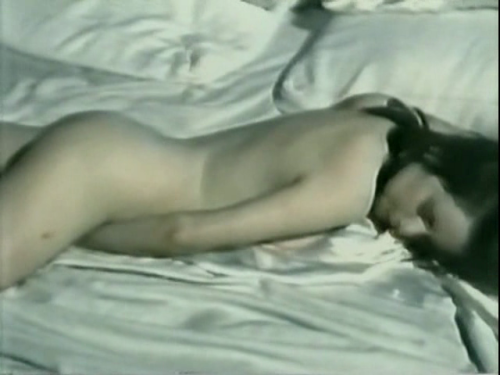
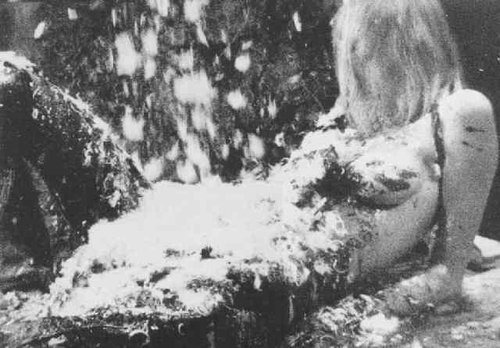
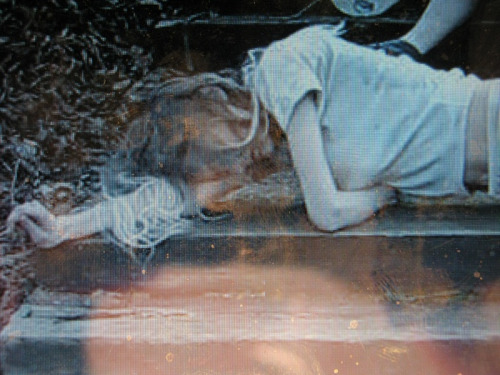













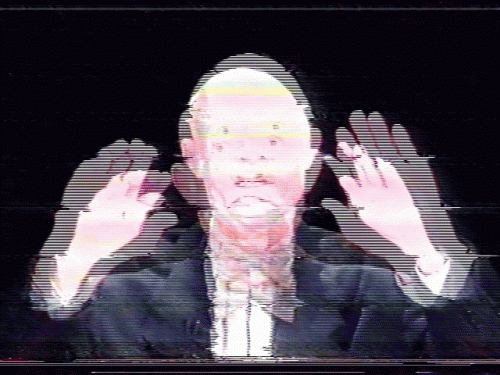
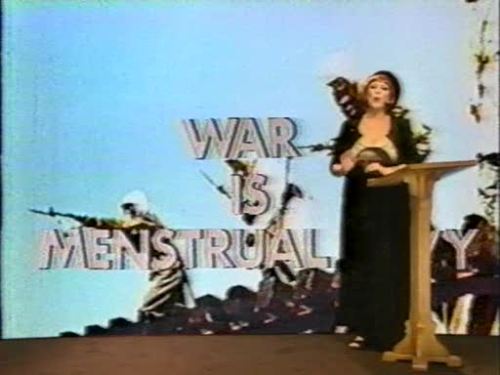
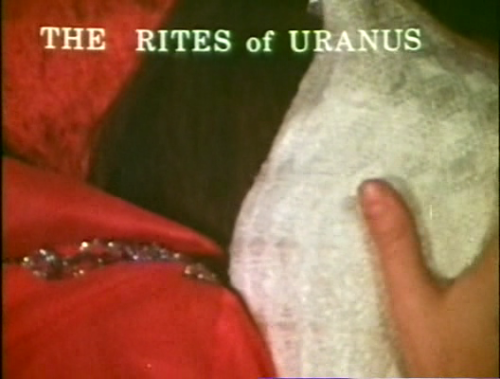
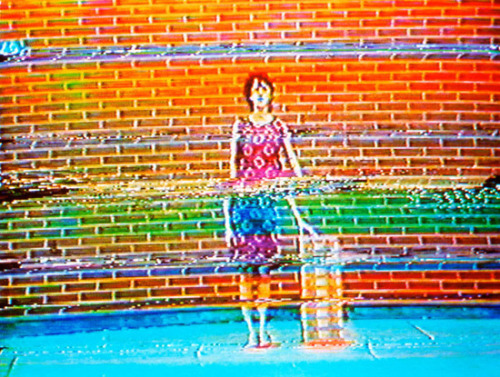

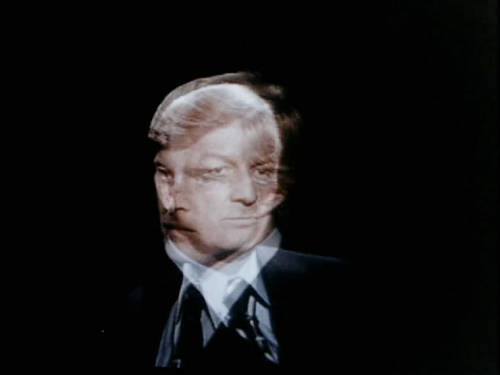

 hi
hi
 llll
llll





 Carolee Schneemann was primarily a visual artists who dealt with themes pertaining to womens bodies, and in turn, feminist thought. Her most notorious film is Fuses, a 23 minute film that attempts to answer the question of whether or not it is possible to shoot the act of sex without falling prey to being "mere pornography" (or to the objectification of women). And that is the primary bulk of the film, Schneemann and her then partner James Tenney having sex, while the collage and colors are layered over the primary images. Occasionally other images break through, such as Schneemann's cat Kitch watching, trees outside, and Schneemann running into an ocean.
Carolee Schneemann was primarily a visual artists who dealt with themes pertaining to womens bodies, and in turn, feminist thought. Her most notorious film is Fuses, a 23 minute film that attempts to answer the question of whether or not it is possible to shoot the act of sex without falling prey to being "mere pornography" (or to the objectification of women). And that is the primary bulk of the film, Schneemann and her then partner James Tenney having sex, while the collage and colors are layered over the primary images. Occasionally other images break through, such as Schneemann's cat Kitch watching, trees outside, and Schneemann running into an ocean. As an experimental film it's primary strength comes from marrying it's form with it's content. Instead of using film to merely exploit the physical, material aspects (to no greater end other than theory, as many Materialist [or as Sitney would term, Structuralism] films of the day did, i.e. James Landow, Tony Condrad, Hollis Frampton, etc.) the form of the film physically reflects the content. The act of lovemaking is presumed to be a beautiful, intense thing, so there is a heavy aesthetic consideration. For the first part of the film, the color read cloaks the sex as rapid cuts and film scratches create a mood of chaos than can be considered akin with the chaotic joy of sex. The film stock is beautiful and dirty in the same way that sex can be beautiful and dirty. The camera work is also dislocating and disorienting in the fact that often it takes a few seconds before the viewer can determine what part of the man or womans body he is looking at. In fact, much of the overlaid abstraction present in the first half of the film works to objectively distance the viewer from the act that is appearing on screen. We know what is going on, but our eyes focus more on the abstraction that is present. This change of focus helps to create a sort of emotional tension that can be allied with the feelings that are present during sex.
As an experimental film it's primary strength comes from marrying it's form with it's content. Instead of using film to merely exploit the physical, material aspects (to no greater end other than theory, as many Materialist [or as Sitney would term, Structuralism] films of the day did, i.e. James Landow, Tony Condrad, Hollis Frampton, etc.) the form of the film physically reflects the content. The act of lovemaking is presumed to be a beautiful, intense thing, so there is a heavy aesthetic consideration. For the first part of the film, the color read cloaks the sex as rapid cuts and film scratches create a mood of chaos than can be considered akin with the chaotic joy of sex. The film stock is beautiful and dirty in the same way that sex can be beautiful and dirty. The camera work is also dislocating and disorienting in the fact that often it takes a few seconds before the viewer can determine what part of the man or womans body he is looking at. In fact, much of the overlaid abstraction present in the first half of the film works to objectively distance the viewer from the act that is appearing on screen. We know what is going on, but our eyes focus more on the abstraction that is present. This change of focus helps to create a sort of emotional tension that can be allied with the feelings that are present during sex. During sex there is often a giving-up of bodily control to pleasure, and this visual chaos elaborates this. Visceral close-ups are less shocking under layers of scratches and colors; we know what we're seeing but are not offended, nor even put off by them. The aforementioned disorientation helps to view the body parts for what they are; simply human body parts. In this context they are divorced from the eroticizing signifier; the audience is not turned on. But the experience is a pleasant one, as the colorful chaos that decorates the film is, as I've mentioned before, very aesthetically pleasing.
During sex there is often a giving-up of bodily control to pleasure, and this visual chaos elaborates this. Visceral close-ups are less shocking under layers of scratches and colors; we know what we're seeing but are not offended, nor even put off by them. The aforementioned disorientation helps to view the body parts for what they are; simply human body parts. In this context they are divorced from the eroticizing signifier; the audience is not turned on. But the experience is a pleasant one, as the colorful chaos that decorates the film is, as I've mentioned before, very aesthetically pleasing. One very interesting element of the film is that Schneemann often uses visual icons to imply a sort of binary opposition. Night is contrasted with day, the male nude body with the female nude body, winter and summer, warm colors and cold colors (the end of the film is primarily masked in blue). The oppositions help to extend the idea of a tension that is present. But what's more interesting to me is that these images are presented in binary oppositions in what could purportedly be termed a feminist film; from my understanding a the major feminist goal (much like that of post-structuralism) is to eradicate the idea of a binary opposition between the sexes. I fear that the opposing images of a man's body followed by a womans somewhat undermines this, but I think (I might be wrong here) that in 1967 the idea of tearing down this opposition wasn't as prevalent in feminist thought.
One very interesting element of the film is that Schneemann often uses visual icons to imply a sort of binary opposition. Night is contrasted with day, the male nude body with the female nude body, winter and summer, warm colors and cold colors (the end of the film is primarily masked in blue). The oppositions help to extend the idea of a tension that is present. But what's more interesting to me is that these images are presented in binary oppositions in what could purportedly be termed a feminist film; from my understanding a the major feminist goal (much like that of post-structuralism) is to eradicate the idea of a binary opposition between the sexes. I fear that the opposing images of a man's body followed by a womans somewhat undermines this, but I think (I might be wrong here) that in 1967 the idea of tearing down this opposition wasn't as prevalent in feminist thought. The only other figure in the film is the cat, Kitch. While it can obviously be read as a stand in for the voyeur, which is ostensibly us (us being the audience), it's hard to not also read the cat as a visual pun for Schneeman's genitalia (pussy/pussy). Another proto-feminist idea present in the film is Schneemann's incorporation of nature shots that punctuate certain sections; leaves, trees, and most importantly, the ocean. It's somewhat archaic to consider the female body as one with nature (although many important Feminists subverted this idea into a sort of Goddess worship that reclaimed the idea), but it helps to create an easing sense of beauty, the female body juxtaposed with the natural world. Also punctuating the film are light permeated shots of Schneemann running into the ocean, something that can possibly be read as a sort of "return to the womb," a uniquely feminine attribute. Jess Franco would also explore the ocean as an endpoint in many of his films (Sexual Story of O comes to mind immediately), but Schneemann uses it in a significantly female context. As a film, Fuses suffers from mediocre, somewhat amateur camera work and, more unfortunately, a lack of rhythm in the editing. The ideas of the film remain, but one can't help but wish that some sort of rhythm could have carried the duration of the film in a more interesting manner. Another complaint for me is that the film has no climax, but to have a climax a narrative structure is required, and Schneemann isn't telling a story, she's showing us an act. Regardless, the film is subtly powerful.
The only other figure in the film is the cat, Kitch. While it can obviously be read as a stand in for the voyeur, which is ostensibly us (us being the audience), it's hard to not also read the cat as a visual pun for Schneeman's genitalia (pussy/pussy). Another proto-feminist idea present in the film is Schneemann's incorporation of nature shots that punctuate certain sections; leaves, trees, and most importantly, the ocean. It's somewhat archaic to consider the female body as one with nature (although many important Feminists subverted this idea into a sort of Goddess worship that reclaimed the idea), but it helps to create an easing sense of beauty, the female body juxtaposed with the natural world. Also punctuating the film are light permeated shots of Schneemann running into the ocean, something that can possibly be read as a sort of "return to the womb," a uniquely feminine attribute. Jess Franco would also explore the ocean as an endpoint in many of his films (Sexual Story of O comes to mind immediately), but Schneemann uses it in a significantly female context. As a film, Fuses suffers from mediocre, somewhat amateur camera work and, more unfortunately, a lack of rhythm in the editing. The ideas of the film remain, but one can't help but wish that some sort of rhythm could have carried the duration of the film in a more interesting manner. Another complaint for me is that the film has no climax, but to have a climax a narrative structure is required, and Schneemann isn't telling a story, she's showing us an act. Regardless, the film is subtly powerful. Fuses is available to watch online at
Fuses is available to watch online at 




